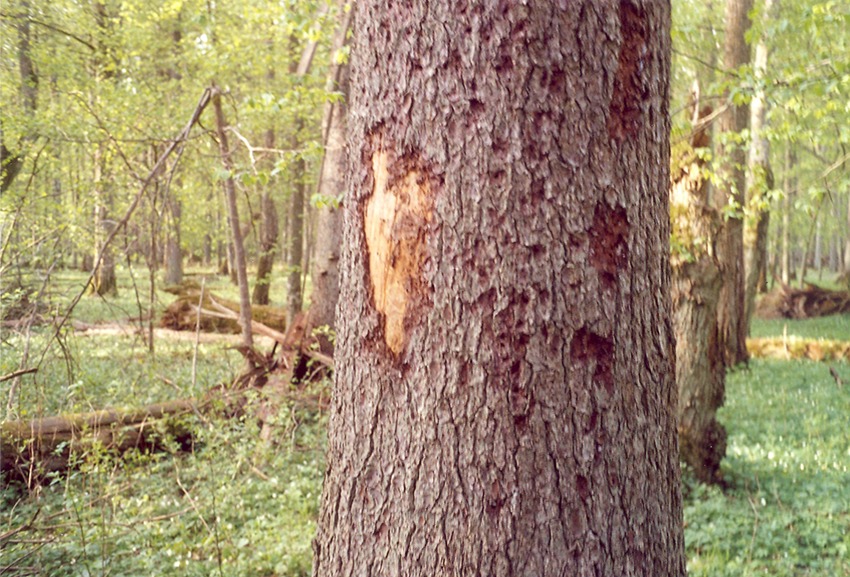Bark beetles have been in California longer than people, but they aren’t especially destructive under normal circumstances.
However, when trees are weakened due to lack of water from prolonged drought, they are more susceptible to attack. Once attacked by bark beetles, the tree will die. More than 102 million trees, mostly conifers, have already died from drought and bark beetles in California. In some communities, up to 85 percent of the forest trees have been killed, becoming dry fuel, just waiting to go up in flames.

Since the early 2000’s, bark beetles have been eating away at the American Northwest.
The mountain pine beetle is native to western pine forests, where it normally lives in relatively small numbers. The population booms sporadically, killing large swaths of forest. Devastation is usually confined to a single region. The scale of the current epidemic is propelled by drought and is unprecedented.
California now has 20 invasive species of bark beetles, of which 10 species have been discovered since 2002. The biology of these new invaders is poorly understood. The beetles over the years have been able to jump tree species and infiltrate trees that have not evolved defenses against the beetle so they are easily wiped out. The epidemic could spread as much as ten times the area it affects today. By 2030, it could infect more than 5,000 square miles.
Controlling beetles in forests is a herculean task.
Pines need little fertilization or pruning. A small amount of nitrogen applied during winter will stimulate vegetative growth. Healthy trees should not be severely pruned or topped. Trees can be pruned lightly if desired, but do not prune from February to October when adult beetles are flying. Unseasoned, freshly cut wood can harbor beetles and should not be piled near susceptible trees.
